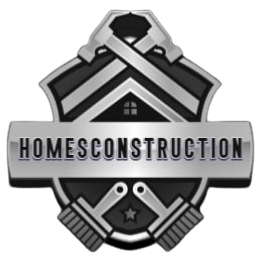Modern house design has evolved significantly over the years, blending functionality, aesthetics, and sustainability. Today’s homes are no longer just places to live; they reflect the lifestyle, values, and aspirations of their inhabitants. Modern architecture focuses on clean lines, open spaces, and a seamless connection between indoor and outdoor living. This article explores the key elements of modern house design and how they contribute to creating beautiful, efficient, and livable spaces.
Emphasis on Clean Lines and Simplicity
Modern house design embraces simplicity and minimalism. Clean lines, flat roofs, and geometric shapes dominate the architecture. This approach eliminates unnecessary ornamentation, focusing on the purity of form and function. The result is a sleek and uncluttered look that exudes elegance and sophistication.
Open Floor Plans
Open floor plans are a hallmark of modern house design. By removing unnecessary walls, designers create expansive spaces that flow seamlessly from one area to another. This layout fosters a sense of openness and enhances natural light penetration throughout the home. An open floor plan also promotes social interaction, making it ideal for families and those who love to entertain.
Integration with Nature
Modern homes often feature large windows, sliding glass doors, and outdoor living spaces that create a strong connection with nature. This integration allows homeowners to enjoy natural light, fresh air, and views of the surrounding landscape. Incorporating elements such as indoor gardens, green roofs, and patios further blurs the line between indoors and outdoors, enhancing the overall living experience.
Use of Sustainable Materials
Sustainability is a key consideration in modern house design. Architects and builders prioritize using eco-friendly materials like reclaimed wood, bamboo, and recycled steel. These materials reduce the environmental impact of construction and create healthier living environments. Additionally, sustainable design practices such as passive solar heating, rainwater harvesting, and energy-efficient appliances contribute to lower energy consumption and reduced carbon footprints.
Smart Home Technology
The integration of smart home technology is another defining feature of modern house design. Home automation systems allow homeowners to control lighting, heating, cooling, security, and entertainment systems with ease. Smart thermostats, energy-efficient lighting, and automated window treatments enhance comfort and convenience while optimizing energy use. This technology not only makes daily living more efficient but also adds a layer of luxury to modern homes.
Focus on Functionality
In modern house design, every element serves a purpose. Functional design ensures that spaces are used efficiently and that each room meets the needs of the occupants. Built-in storage solutions, multifunctional furniture, and flexible living areas are common features. This focus on functionality extends to the kitchen and bathrooms, where innovative fixtures and appliances enhance usability and efficiency.
Embracing Natural Light
Natural light plays a crucial role in modern house design. Large windows, skylights, and open spaces maximize daylight, reducing the need for artificial lighting and creating bright, welcoming interiors. The strategic placement of windows and glass doors ensures that natural light reaches every corner of the home, enhancing the sense of space and well-being.
Bold and Neutral Color Palettes
Modern house often uses a neutral color palette as a foundation, accented with bold, vibrant colors. Whites, grays, and earth tones create a calming backdrop, while pops of color add personality and interest. This approach allows for flexibility in decorating and helps to create a cohesive look throughout the home.
Conclusion
Modern house design represents a harmonious blend of functionality, aesthetics, and sustainability. Clean lines, open floor plans, and a connection with nature define this architectural style. The use of sustainable materials and smart home technology enhances the efficiency and comfort of modern homes. By focusing on simplicity and functionality, modern house design creates beautiful, livable spaces that cater to the needs and aspirations of today’s homeowners. As the demand for innovative and eco-friendly living spaces continues to grow, modern house design will undoubtedly evolve, setting new standards for residential architecture.
